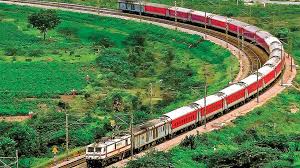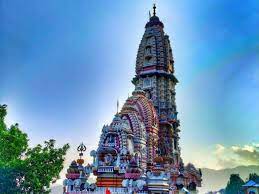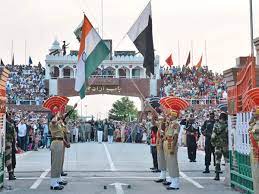A JOURNEY THROUGH COUNTRIES THAT START WITH K

When it comes to the world's geography, there are often intriguing facts about countries that pique the curiosity of even the most seasoned travelers and geography enthusiasts. Did you know there are only five countries in the world that start with the letter "K"? While some letters, such as "S" or "M," boast a long list of nations, the letter "K" is relatively modest. Despite this, each of these countries has a unique history, culture, and significance globally. In this article, we will explore these five countries, uncovering their histories, geographical locations, cultural richness, and their role on the world stage.
1. KAZAKHSTAN
Kazakhstan, the largest of the five countries that start with the letter "K," is located in Central Asia. It is the world's largest landlocked country and the ninth largest country overall. With a population of over 18 million, Kazakhstan is a country rich in natural resources, particularly oil and gas, which play a significant role in its economy. The country shares borders with Russia to the north, China to the east, Kyrgyzstan, Uzbekistan, and Turkmenistan to the south, and the Caspian Sea to the west.
Kazakhstan's history is deeply intertwined with the nomadic cultures of Central Asia. Historically, it was part of the Soviet Union until its independence in 1991. The Soviet period had a lasting impact on Kazakhstan, shaping its political structure and infrastructure. Since its independence, the country has made significant strides in modernizing its economy and infrastructure while still preserving its cultural heritage. The capital of Kazakhstan is Nur-Sultan, formerly known as Astana, which became the capital in 1997 and was renamed in 2019 in honor of the country's first president, Nursultan Nazarbayev.
2. KYRGYZSTAN
Kyrgyzstan, a mountainous country in Central Asia, is another country that begins with the letter "K." It is bordered by Kazakhstan to the north, Uzbekistan to the west, Tajikistan to the south, and China to the east. The country has a population of approximately 6.5 million people and is known for its stunning landscapes, which include the Tien Shan Mountain range, alpine lakes, and vast valleys.
Historically, Kyrgyzstan has been inhabited by nomadic people who lived in yurts, portable dwellings made of felt. The nomadic traditions still play a significant role in the culture of the country today. The Kyrgyz people have a rich oral tradition, with epic poems like the Manas, a centuries-old epic that tells the story of a hero named Manas, central to their heritage. The country was part of the Soviet Union until its independence in 1991, and since then, it has experienced political instability and economic challenges. Bishkek, the capital and largest city, is the political and economic center of the country.
3. KENYA
Located in East Africa, Kenya is a country known for its stunning landscapes, diverse wildlife, and vibrant culture. With a population of over 53 million people, Kenya is one of the most developed countries in East Africa. It is bordered by Ethiopia to the north, Somalia to the east, Tanzania to the south, Uganda to the west, and South Sudan to the northwest. The Indian Ocean lies to the southeast of the country.
Kenya's economy is one of the most diverse in Africa, with sectors such as agriculture, tourism, and services playing key roles. Kenya is known worldwide for its incredible wildlife and national parks, such as the Maasai Mara, Amboseli, and Tsavo, which attract millions of tourists each year. The country is also famous for its runners, particularly in long-distance and marathon events, with many of the world's top athletes hailing from the highland regions of Kenya.
Kenya's history is shaped by its colonial past, as it was a British colony until it gained independence in 1963. Since independence, Kenya has made significant strides in terms of infrastructure development and economic growth, though challenges such as poverty, political instability, and corruption persist. Nairobi, the capital city, is an important political and economic hub in Africa.
4. KUWAIT
Kuwait, a small but wealthy country located on the northeastern tip of the Arabian Peninsula, is another nation that begins with the letter "K." It is bordered by Iraq to the north and Saudi Arabia to the south, while the Persian Gulf lies to the east. Despite its small size, Kuwait is one of the richest countries in the world, thanks to its vast oil reserves.
The country has a population of about 4.3 million people, with a large proportion of expatriates living and working in the country. Kuwait's wealth, derived primarily from its oil industry, has allowed it to build an advanced infrastructure, with modern cities, high-rise buildings, and luxury shopping malls. Kuwait City, the capital, is known for its stunning skyline, the iconic Kuwait Towers, and its bustling souks.
Kuwait's history dates back to ancient times, but it was the discovery of oil in the 20th century that transformed the country into a global financial hub. In 1990, Kuwait was invaded by Iraq, leading to the Gulf War. After the liberation of Kuwait in 1991, the country focused on rebuilding and diversifying its economy. Today, Kuwait is known for its strong economy, high standard of living, and political stability.
5. KIRIBATI
Kiribati, a small island nation located in the central Pacific Ocean, is one of the five countries that begin with the letter "K." It consists of 33 atolls and islands spread over 3.5 million square kilometers of ocean, making it one of the most dispersed countries in the world. Kiribati has a population of around 120,000 people and is one of the least developed countries in the world. It is known for its incredible biodiversity, stunning coral reefs, and rich cultural heritage.
The nation is made up of several island groups, including the Gilbert Islands, Phoenix Islands, and the Line Islands. Kiribati is situated just north of the equator, and its islands are scattered across a vast area of ocean, making it geographically unique. The capital of Kiribati is Tarawa, which is located in the Gilbert Islands. The islands are particularly vulnerable to the impacts of climate change, especially rising sea levels, which threaten their very existence.
Kiribati's history is characterized by its traditional seafaring culture. The people of Kiribati have a deep connection to the ocean, relying on fishing and coconut farming for sustenance. The islands were first settled by Polynesians around 3,000 years ago, and the country was later a British colony before gaining independence in 1979. Kiribati's culture is a blend of Polynesian, Micronesian, and British influences.
You may like post

FROM SACRIFICE TO RESURRECTION
Understanding Good Friday and Easter Sunday

HIDDEN INDIAN SITES WORTHY OF UNESCO
Exploring India’s Sites That Should Be on the UNESCO World Heritage List







